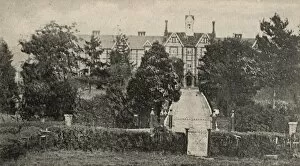Bonython Collection
Bonython: A Glimpse into the History of Workhouses Step back in time and explore the intriguing world of Bonython
All Professionally Made to Order for Quick Shipping
Bonython: A Glimpse into the History of Workhouses Step back in time and explore the intriguing world of Bonython, a name associated with various workhouses across different regions. From Williton Union Workhouse to Wycombe Union Workhouse in Saunderton, Oxfordshire, these establishments played a significant role in society's welfare during their time. Amesbury Union workhouse in Wiltshire stands as a testament to the compassion and care provided to those less fortunate. Its walls witnessed countless stories of resilience and hope amidst challenging circumstances. As we delve deeper into history, we encounter the main entrance of Tendring's Union workhouse in Essex. This imposing structure served as a gateway for individuals seeking refuge or assistance during times of hardship. During World War I, Guildford Union workhouse transformed into a military hospital, offering solace and healing to wounded soldiers. The echoes of their bravery still resonate within its walls today. In St Columb Major Union Workhouse located in Cornwall lies another chapter filled with tales of struggle and perseverance. It reminds us that even amidst adversity, humanity can find strength through unity. Wycombe Union Workhouse once again emerges on our journey through Bonython's past. Situated in Saunderton, Buckinghamshire, it symbolizes both the challenges faced by those seeking support and the dedication shown by caretakers striving to make a difference. The grandeur of Liskeard's Union Workhouse showcases architectural beauty intertwined with historical significance. Its presence serves as an enduring reminder that every person deserves dignity regardless of circumstance. Dunmow's Union Workhouse situated in Essex offers insight into how communities came together to provide aid when it was most needed. It stands as evidence that compassion knows no boundaries or limitations. Lastly, Babington House Hospital located in Belper, Derbyshire represents hope restored for many who sought medical attention within its walls. It serves as an emblem of resilience and the power of healing.














